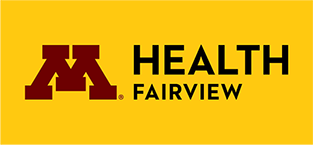|
Mastering Eye Movement Disorders in Pediatrics: Practical Visual Rehab Solutions for ADHD, Dyslexia, Autism and more!
Date: May 17, 2025
Intended audience: OT, OTA, PT, PTA
Check in time: 7:30-8:00
Class time: 8:00-4:00
Contact hours: 6.0
Location:
PESI to provide continuing education credits
Location: Wilf Auditorium
2450 Riverside Avenue, Minneapolis, MN 55454
Held in Wilf Auditorium in Children's Masonic Hospital
Course intended to be completed in full. If you need to arrive late or leave early the CE department must be notified before course takes place for contact hours to be adjusted. Occupational Therapists & Occupational Therapy Assistants: PESI, Inc. is an AOTA Approved Provider of continuing education. Provider #: 3322. This activity has been submitted to AOTA for review. Approval pending. Physical Therapists & Physical Therapist Assistants: This activity consists of 7.0 clock hours of instruction that is applicable for physical therapists. This certificate is proof of your attendance. Please retain it in your records or use for submission as proof of completion when required. Cancellation Policy: Cancellation Fee will apply.
Fairview rehabilitation Services in collaboration with PESI Instructor: Robert Constantine, OTR/L is an occupational therapist with over 25 years of experience in the fields of visual and neurological rehabilitation. Mr. Constantine is employed by the Pearl Nelson Child Development Center, where he focuses on the treatment of eye movement disorders in neurotypical and special needs children as well as adult stroke, TBI and concussion survivors. Mr. Constantine’s passion leads him to intensive studying of the visual system and continuous searches for new, evidence-based interventions to improve patient outcomes. Robert has had training from the Neuro-Optometric Rehabilitation Association, a unique interdisciplinary organization that brings together the tools of optometry, occupational and physical therapy to improve outcomes for patients with neurological diagnoses. He was previously the only occupational therapist to be a member of the High-Performance Vision Associates, an elite group of sports vision optometrists. As such, Mr. Constantine has participated in sports vision screenings at IMG Academy, Hendricks Motorsports, and on the LPGA tour. He has also developed and marketed drag-racing specific glasses that have been successful in NHRA Sportsman drag racing, as well as having worked with elite NHRA racers, golfers, and sporting clays champions. Speaker Disclosures: Financial: Robert Constantine has employment relationships with CIAO Seminars and Pearl Nelson Child Development Center. He receives a speaking honorarium and recording royalties from PESI, Inc. He has no relevant financial relationships with ineligible organizations. Non-financial: Robert Constantine has no relevant non-financial relationships. Course summary: Are you working with children whose coordination, reading, or handwriting problems don’t respond to typical interventions? Struggling with cases where poor posture, clumsy motor skills, or letter reversals leave you and your patients frustrated? Often, these are not purely behavioral or learning issues—they’re rooted in hidden eye movement and near vision dysfunctions that standard treatments overlook. In this powerful program, you’ll learn the specialized vision assessment techniques that go beyond the basics, helping you uncover the root cause of these challenges. Through hands-on demonstrations and case studies, you’ll gain tools that seamlessly integrate vision, balance, and proprioception, providing targeted interventions with real, lasting results. With DIY and high-tech solutions like the Brock String, Hart Chart, and prism techniques, you'll discover how to improve critical functional skills, such as reading fluency, posture, balance, and hand-eye coordination. Walk away equipped to tackle even the most complex cases, increase patient compliance and progress, and confidently offer specialized care that sets you apart. This training will give you the skills to confidently identify and treat visual issues that others miss—boosting outcomes, reducing frustration, and empowering you to make a lasting impact on your patients’ lives. Join us and master these essential techniques to transform your practice and your patients’ success. Objectives: Upon completion of this course participants will be able to:
Outline: There will be a 15-minute morning and afternoon break. Lunch will be scheduled from 11:50am – 1:00pm. See the Big Picture: Foundations of the Visual System
Beyond Behavior: Linking Vision to Learning and Motor Skills
Eyes on the Prize: Essential Eye Movement Assessments
Hands-On Lab: Practical Techniques for Vision Training
Balancing Act: Vision’s Role in Posture, Balance, and Movement
From Theory to Practice: Real-World Case Studies
Cracking the Code: Integrating Visual Skills into Functional Goals
REGISTER FOR THIS COURSE
|

